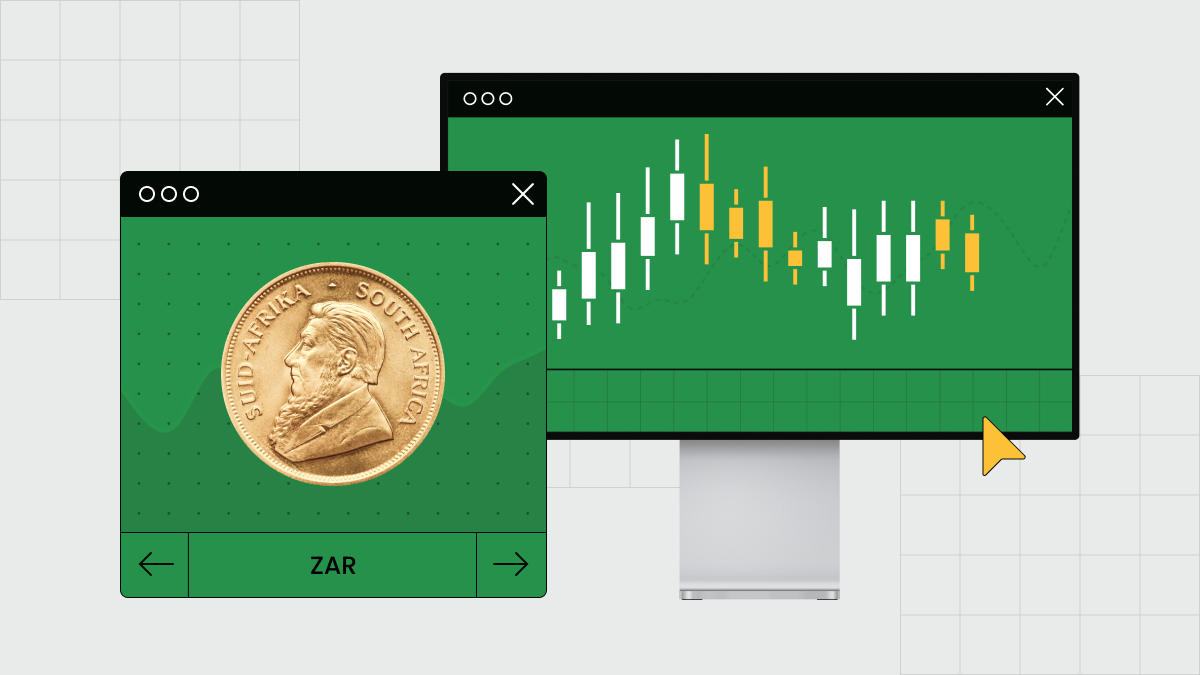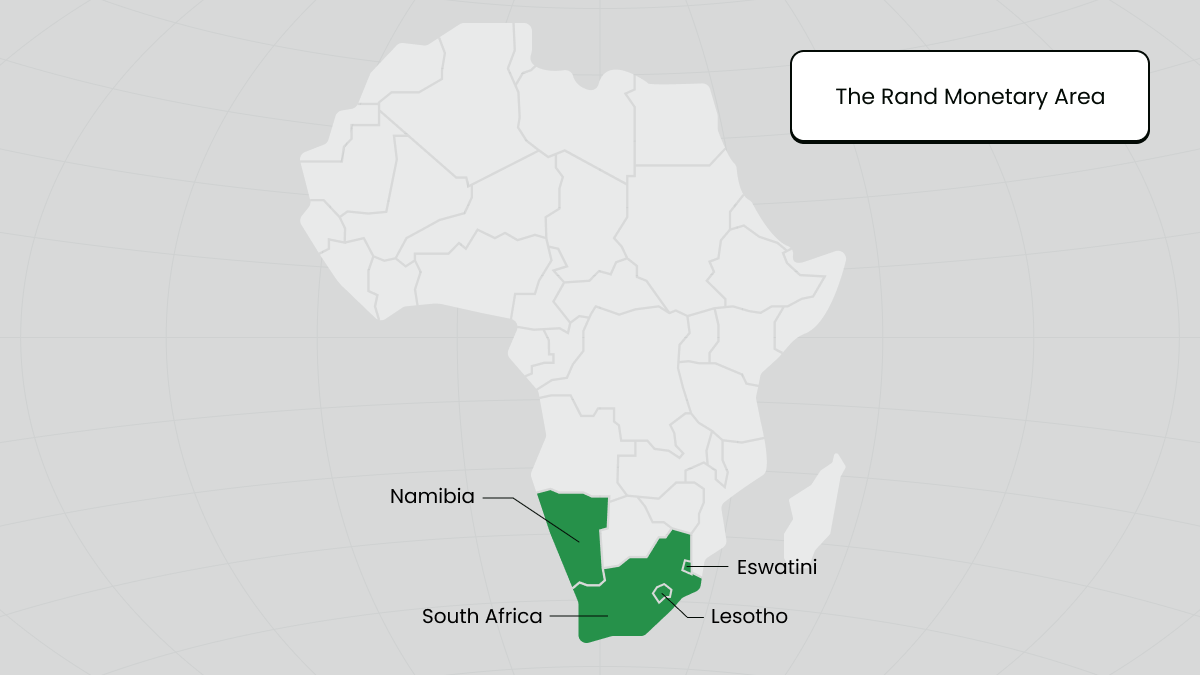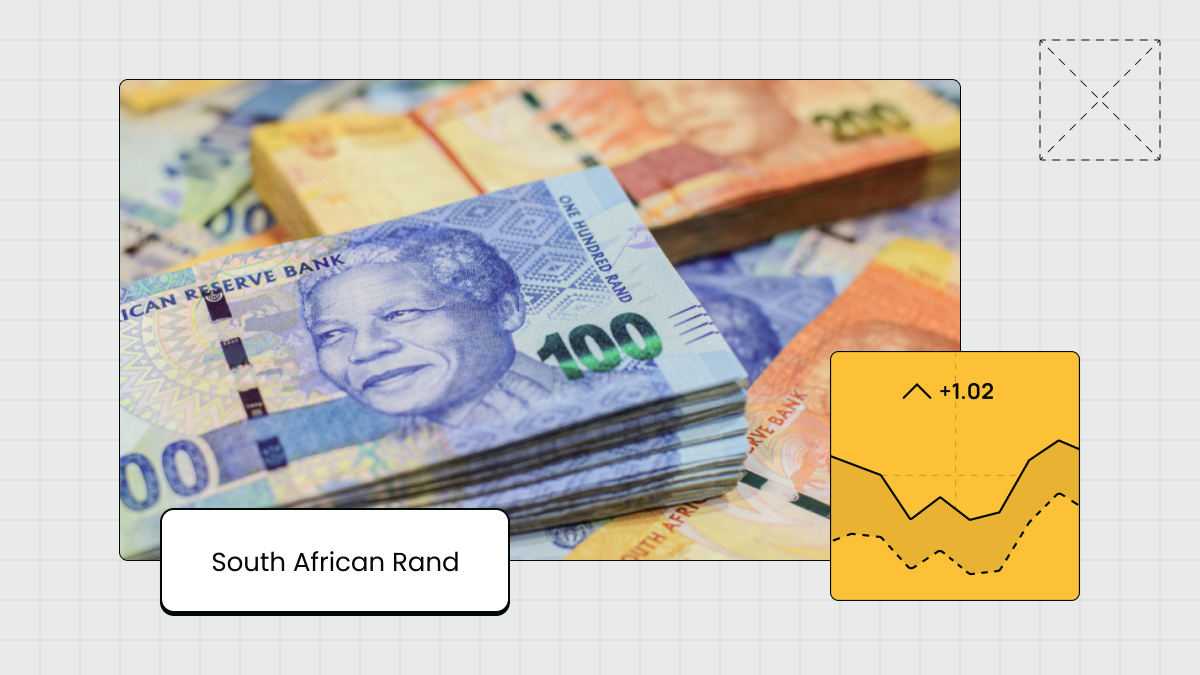
Introduction
The South African Rand is uniquely positioned in forex trading, serving as a vital indicator of economic trends within emerging markets. This article dives into the rich history and economic implications of the South African Rand, illuminating its role in global finance and trading environments. By understanding the evolution of this currency, traders can better navigate the complexities of the forex market, utilizing insights into the Rand's performance to make informed trading decisions.
What Is the South African Rand (ZAR)?
The South African Rand (ZAR), denoted by the symbol 'R' and subdivided into 100 cents, is the official currency of South Africa and is also used in the Common Monetary Area, which includes Namibia, Lesotho, and Eswatini. Introduced on February 14, 1961, the Rand replaced the South African Pound as legal tender. The name 'Rand' derives from the Witwatersrand. On this ridge, Johannesburg stands, and South Africa's primary gold deposits were found, underscoring the historical connection between the country's wealth and its currency.
The South African Reserve Bank manages the Rand's issuance and regulation. Over the years, the currency has undergone various depreciation and appreciation phases, influenced by domestic economic policies and international political developments. Since its inception, the Rand has reflected South Africa's economic resilience and challenges, often reacting sharply to global and local changes.
Understanding the South African Rand (ZAR)
End of the Apartheid System
The dismantling of apartheid in South Africa had profound impacts on the nation's economy and, by extension, the value of its currency. Apartheid, the system of institutionalized racial segregation and discrimination, came to an end in the early 1990s, setting the stage for significant political and economic changes. The transition to a majority rule in 1994 marked a critical turning point for the South African Rand, as investors reacted optimistically to the shifts. The general elections 1994, which brought Nelson Mandela to power, initially led to volatility in the Rand’s value as the market gauged the new government's economic policies.
Krugerrands
Introduced in 1967, the Krugerrand is a South African gold coin minted by the South African Mint to help market South African gold. It is named after Paul Kruger, a prominent figure in the history of South Africa and the face on the coin, and the Rand, the South African currency. The Krugerrand was the first gold coin to contain precisely one ounce of fine gold, and it was intended to provide a vehicle for private ownership of gold.
Despite the economic sanctions against South Africa during the apartheid years, the Krugerrand was distributed globally and became a popular means for individuals to hold gold. Even today, it remains a favorite among gold investors and collectors worldwide.
The South African Reserve Bank
Established in 1921, the South African Reserve Bank (SARB) is the country's central bank. It is primarily responsible for achieving and maintaining price stability in the interest of balanced and sustainable economic growth in the country. As the issuer of the South African Rand, the SARB plays a crucial role in the country's financial stability and economic policy.
The central bank’s functions have evolved, especially after South Africa transitioned from apartheid to a democratic government. One of its key roles is managing the country's currency, the Rand, through monetary policy, which includes setting interest rates and controlling the money supply. The SARB also oversees the banking sector, ensuring it remains stable and well-regulated. This oversight extends to maintaining effective payment systems and managing the country's gold and foreign exchange reserves.
The Rand Monetary Area
The Rand Monetary Area (RMA) illustrates a significant regional cooperation in currency management involving South Africa, Namibia, Lesotho, and Eswatini. Established to facilitate economic integration and mutual benefit among the member countries, the RMA allows the South African Rand to be used as a common currency. However, each maintains its currency as well.

Namibia, Lesotho, and Eswatini peg their currencies—the Namibian Dollar, the Lesotho Loti, and the Swazi Lilangeni, respectively—at parity with the Rand. This arrangement simplifies transactions, enhances trade fluidity, and stabilizes economies by reducing the risks associated with currency exchange fluctuations among these countries. The RMA promotes economic stability and strengthens financial relationships between South Africa and its neighboring countries.
The Rand's Fluctuating Fortunes
The South African Rand has experienced significant volatility and fluctuations in its value over the decades, influenced by domestic factors and international economic conditions. Initially, upon its introduction in 1961, the Rand was traded more substantially than the US dollar, but this changed as the country faced various economic and political challenges.
The Rand's value began to erode in the 1980s due to increasing international pressure against the apartheid regime, high inflation rates, and political uncertainty within the country. This decline was markedly sharp after the government declared a debt repayment moratorium in 1985, which led to a rapid currency depreciation. The post-apartheid era brought initial stability, but the Rand suffered another major blow during the global financial crises and other local economic missteps. It reached its lowest point in historical terms by December 2001 when it traded at over R13 to the USD.
In recent years, the Rand has continued to be affected by global economic sentiments, commodity prices, and changes in the political landscape within South Africa. Traders and analysts closely watch its fluctuating fortunes as they reflect not only the economic status of South Africa but also the broader emerging market environment.
Why Is the South African Currency Called the ZAR?
The abbreviation "ZAR" for the South African Rand is derived from the Dutch word "Zuid-Afrikaanse Rand." "Zuid-Afrikaanse" translates to "South African" in Dutch, reflecting the historical influence of the Dutch language in the region due to the settlement and colonization by the Dutch in the 17th century.
The term "Rand" comes from the Witwatersrand, the ridge upon which Johannesburg was built and where significant gold deposits were discovered, leading to the gold rush in the area. This geological feature gave the currency its name and underscored the economic significance of gold mining to South Africa's economic development.
The ISO currency code "ZAR" is used in financial markets and the forex trading world to represent the South African Rand, distinguishing it from other currencies that use the dollar sign "R," such as the Brazilian Real.
How Much Is a Rand to a Dollar?
The current exchange rate between the South African Rand (ZAR) and the US Dollar (USD) is a dynamic figure subject to fluctuations influenced by global economic conditions and local factors within South Africa. The latest available data shows that the exchange rate is approximately 1 USD to 19 ZAR. This exchange rate signifies the mid-market price, a standard benchmark for financial reporting, and represents a balance between buy (bid) and sell (ask) prices in currency markets.

Factors Affecting the Exchange Rate:
- Interest Rate Decisions by the Fed and SARB: The decisions on interest rates by both the Fed and the SARB are crucial. Higher interest rates set by the SARB can attract foreign capital, leading to a stronger Rand as investors seek better returns. Conversely, lower rates often have the opposite effect, making the ZAR less attractive to foreign investors. Similarly, the Fed's rate decisions can indirectly impact the ZAR by influencing global financial flows and investor sentiment.
- Political Stability: Political events and policy changes can lead to significant fluctuations in the exchange rate as they affect investor confidence and economic forecasts.
- Commodity Prices: South Africa is a significant exporter of commodities like gold, diamonds, and platinum. When the prices of these commodities rise in global markets, the ZAR typically strengthens due to increased revenue from exports. Conversely, a drop in these prices can weaken the Rand.
FAQ
Why is the South African Rand called ZAR?
The South African Rand is abbreviated as ZAR, which stands for "Zuid-Afrikaanse Rand." This abbreviation stems from the Dutch word for South Africa ("Zuid-Afrika") combined with the word for the currency ("Rand"), reflecting the country's history and its official languages, which include Dutch-derived Afrikaans. This code is used in financial trading and analysis to differentiate it from other currencies, such as the US dollar. The designation helps streamline transactions in global currency markets and is recognized worldwide in business and financial contexts.
What characterizes the Rand?
The South African Rand is known for its volatility in the global markets, influenced by domestic socio-economic factors and international financial currents. The Rand's value can fluctuate significantly due to changes in commodity prices, political stability, and economic performance. This volatility makes it a subject of keen interest and analysis in trading and financial circles. The Rand operates under a floating exchange rate system. Its value can vary widely against currencies like the USD, making it a focal point for investors and analysts in African and international currency markets.
Which Countries Peg Their Currencies to the South African Rand?
Several countries in the Southern African region peg their currencies to the South African Rand to stabilize their economic systems. This arrangement is part of the Common Monetary Area (CMA), including Lesotho, Namibia, and Eswatini (formerly Swaziland). By pegging their currencies to the Rand, these countries benefit from reduced currency risk in trading with South Africa, which is the region's economic powerhouse. This currency pegging supports closer economic ties and facilitates smoother trade and investment flows within the area, showcasing the Rand's significant role in African financial markets.
Are a South African Rand and a Krugerrand the Same Thing?
A South African Rand and a Krugerrand are not the same. The Rand is the official currency of South Africa, used for daily transactions and economic measurement. In contrast, the Krugerrand is a gold coin first minted in 1967 to help market South African gold. It does not have a face value but is traded based on the current market price of gold, often used by investors and collectors. While both are linked to South African economic history, their uses in the financial and trading sectors are distinctly different, with the Krugerrand serving primarily as a vehicle for gold investment.
The Bottom Line
The South African Rand (ZAR) is more than just a currency; it reflects the nation's historical, political, and economic journey. For forex traders and investors, understanding the nuances of the Rand is crucial due to its significant volatility and the influence of both local and global economic events. The currency is a barometer for investor sentiment in emerging markets and offers unique opportunities and risks.
Traders who grasp the historical and current economic contexts influencing the Rand can leverage this knowledge for informed trading strategies in the forex market.
Conclusion
From its roots in the rich gold fields of the Witwatersrand to its current role in the global trading environment, the South African Rand has a storied history intertwined with the fortunes of the nation itself. As South Africa continues to evolve politically and economically, the Rand will remain a key currency to watch for those involved in global finance and trading. Understanding its past and the factors that influence its present value is essential for anyone looking to engage with or invest in emerging markets.


